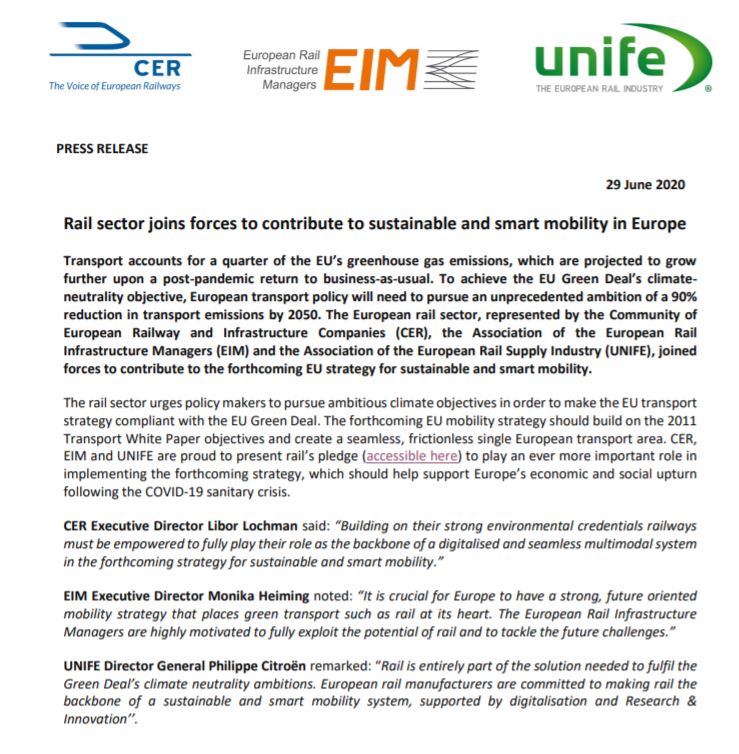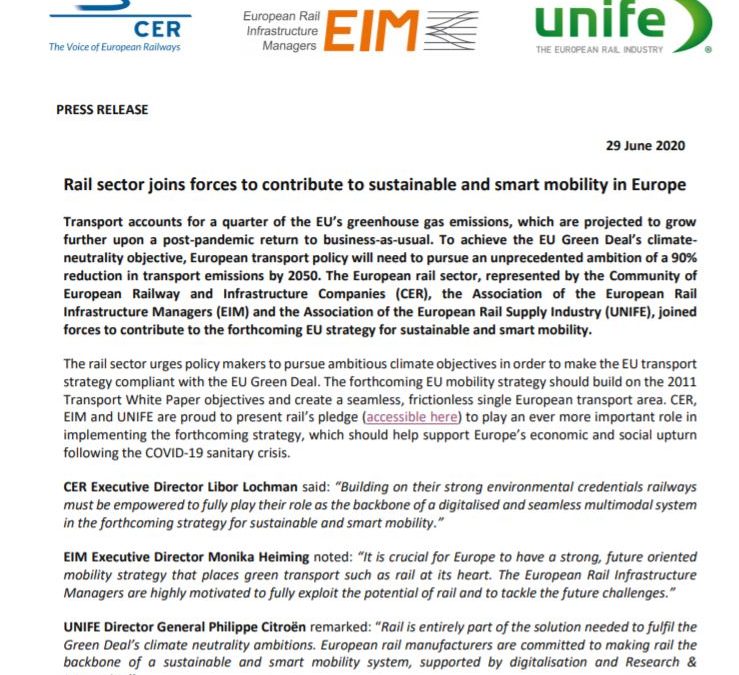Press Releases
Transport accounts for a quarter of the EU’s greenhouse gas emissions, which are projected to grow further upon a post-pandemic return to business-as-usual. To achieve the EU Green Deal’s climateneutrality objective, European transport policy will need to pursue an unprecedented ambition of a 90% reduction in transport emissions by 2050. The European rail sector, represented by the Community of European Railway and Infrastructure Companies (CER), the Association of the European Rail Infrastructure Managers (EIM) and the Association of the European Rail Supply Industry (UNIFE), joined forces to contribute to the forthcoming EU strategy for sustainable and smart mobility.
The rail sector urges policy makers to pursue ambitious climate objectives in order to make the EU transport strategy compliant with the EU Green Deal. The forthcoming EU mobility strategy should build on the 2011 Transport White Paper objectives and create a seamless, frictionless single European transport area. CER, EIM and UNIFE are proud to present rail’s pledge (accessible here) to play an ever more important role in implementing the forthcoming strategy, which should help support Europe’s economic and social upturn following the COVID-19 sanitary crisis.
CER Executive Director Libor Lochman said: “Building on their strong environmental credentials railways must be empowered to fully play their role as the backbone of a digitalised and seamless multimodal system in the forthcoming strategy for sustainable and smart mobility.”
EIM Executive Director Monika Heiming noted: “It is crucial for Europe to have a strong, future oriented mobility strategy that places green transport such as rail at its heart. The European Rail Infrastructure Managers are highly motivated to fully exploit the potential of rail and to tackle the future challenges.”
UNIFE Director General Philippe Citroën remarked: “Rail is entirely part of the solution needed to fulfil the Green Deal’s climate neutrality ambitions. European rail manufacturers are committed to making rail the backbone of a sustainable and smart mobility system, supported by digitalisation and Research & Innovation’’.



